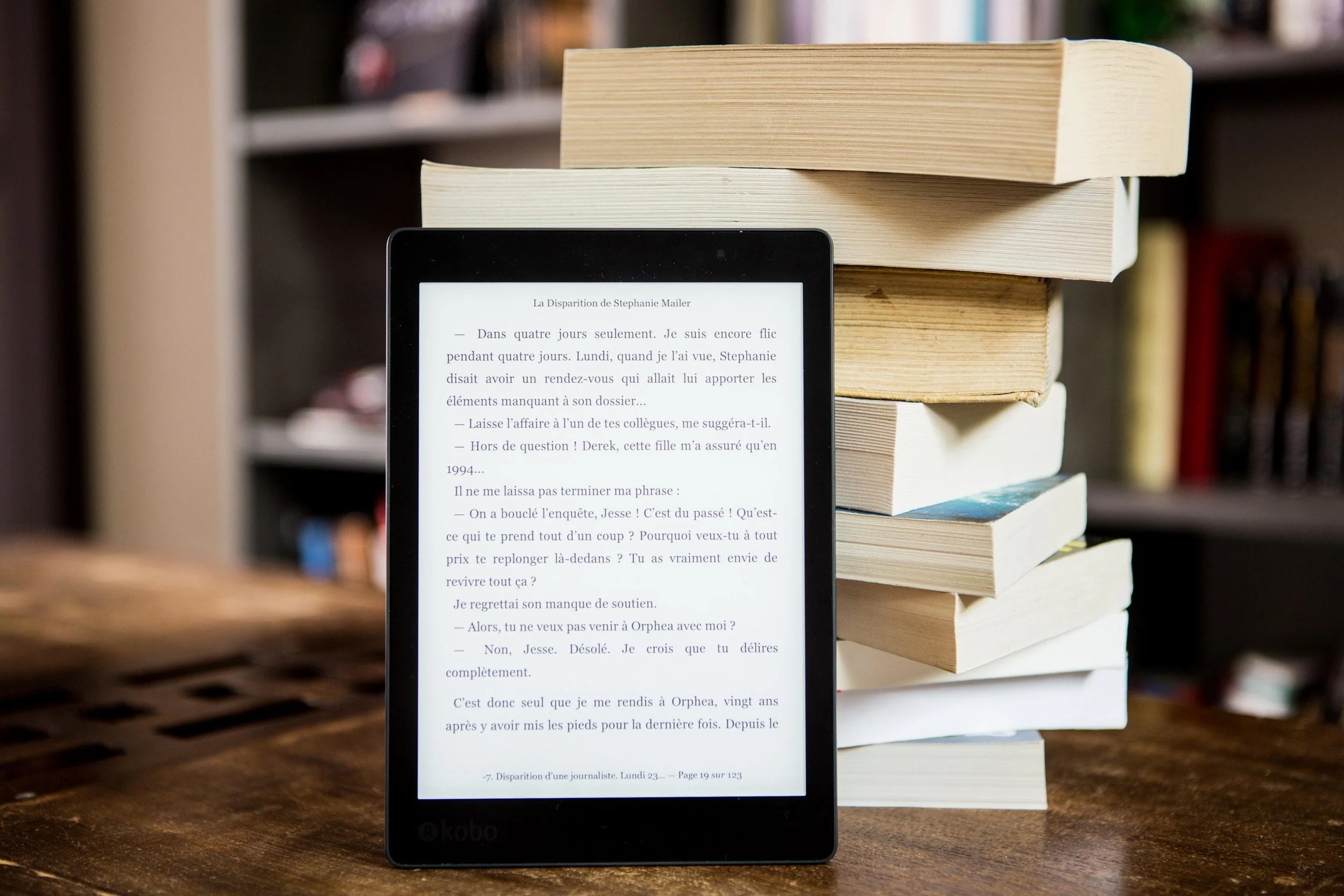Books and the Digital Age
Written by Joana Kim
E-books, online newspapers and digital magazines. All of these are familiar forms of digital media for many today, as technological growth has and is widely transforming the way that we read and access information. Analyzing the Toronto newspaper market alone, Statista reports that between October 2019 and September 2020, the reach for average weekly digital and print newspapers were both equal at a rate of 43%. Increasingly, individuals are becoming accustomed to accessing their daily news on a digital platform, rather than having it delivered right to their door or bought at a local store.
However, as much as digital media has grown extremely accessible and visibly prominent in our everyday lives, it’s true to also note that print media is still in prominent use, with the numbers to prove it. In fact, a 2020 Toronto Star survey reports that in 2019, out of the Ontarians who read a book in 2019, 70% of them read print books, and 28% read e-books. Additionally, 56% of readers stated that they exclusively read print and only 14% preferred e-books
Moreover, the Pew Research Center described that based on a 2021 survey, 30% of U.S. adult readers state that they had read an e-book within the span of the past twelve months - a 5% increase from a past survey done in 2019. Furthermore, around 33% of U.S. adults had read both print and e-books in the same duration, and 9% had solely read e-books. All in all, a wide range of statistics seem to show that while the readership for e-books is increasing, many people still read print books, whether it be alongside e-books or exclusively print readership.
Therefore, looking at the book publishing industry as a whole, although purchasing and reading books online has become a common practice, readers still keep and actively seek physical copies. There is a reason why in this case, the old (print) has not gotten out with the new (digital). By reading any format of books, readers are able to journey along the stories no matter what, but it can be argued that by having the physical copy of a certain book in our hands enriches that experience beyond just nostalgia
However, whether we regularly read leisurely or study textbooks for school, there is no denying that digital media is a force that cannot be ignored. Electronic copies of print have revolutionized the experience of reading a book, magazine, or newspaper through easy accessibility - requiring a tab and a series of clicks at the least. All that to say, it ultimately remains in the hands of the reader - the end user - as there certainly is no right or wrong choice. In fact, it is probable that most have preferences for either format because of the various pros and cons, even as previously mentioned statistics suggest.
Aside from varying personal needs and preferences influencing the choice made in purchasing a book - or specifically, its print or digital copy, perhaps there is more in the scene than one may be directly aware of.
This advancement of digital media brings clarity to areas of concern related to the publishing industry and e-book retailers like Amazon and traditional book publishers. To provide brief context, as summarized in this Vox article, history between key players of the publishing world and Amazon reveals past strife over ebooks and Amazon’s potential to dominate the ebook market threatening ownership, showcasing that technological changes directly impact both readers and companies in significant ways.
As someone who is not nearly fully informed on all the ins and outs of the industry, but still has used both physical and electronic copies of written text, it is interesting to observe the relationship between digital and print media, the impacts on industry players, and the effects of all this on the core experience for readers. There is no doubt that digital media and traditional media can impact one another in mutually beneficial ways as well, namely through social media. Publishers Weekly reports that the increased exposure of certain books thanks to BookTok (a TikTok community of users who share and discuss topics/reviews on books), had contributed to the 30.7% increase of 2021 print sales for the young adult fiction genre.
This example - and many others - of using a digital platform to propel the success of print book sales highlights potential ways in which this relationship could be explored in the future, and perhaps shape the industry in terms of conventional methods of promotion and publishing. It’s a thought to consider that even more vital than which of the two marks the future or is the best option for a technologically advancing digital world, there should be more emphasis on finding a solution to acquaint the two to live in harmony - authoring the same voices and stories, yet on different regions of the media-scape.


